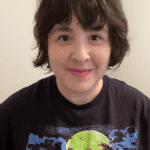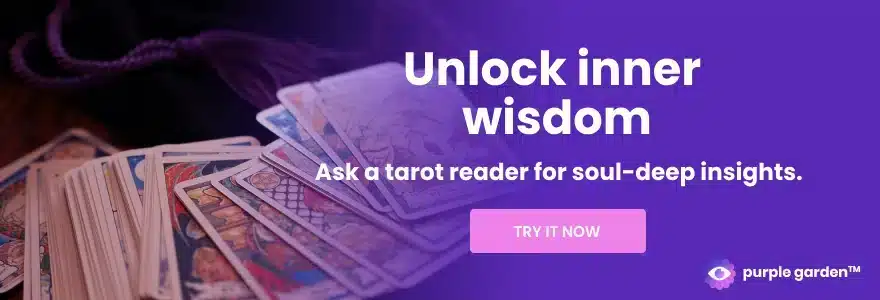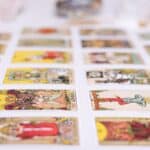Have you ever wondered about the mysterious world of tarot cards? You may have seen them in movies or had a reading done by a friend, but you’re still unsure what the fuss is about. Well, get ready to dive into the enchanting realm of tarot because we’re about to uncover one of its most intriguing aspects: the difference between upright and reversed cards!
Imagine you’re sitting across from a tarot reader, watching as they lay out a spread of beautifully illustrated cards. Some cards are right-side up, while others appear upside down. You might think, “Does it matter which way the card faces?” Spoiler alert: it totally does! The orientation of each card can completely change its meaning, adding layers of depth and nuance to your reading.
Table of Contents
- What Are Upright Tarot Cards?
- What Are Reversed Tarot Cards?
- Are Reversed Cards a Bad Sign?
- What Are the Main Differences Between Upright and Reversed Tarot Cards?
- How Tarot Readers Can Help You Interpret Upright and Reversed Tarot Cards
- Questions to Ask to Better Understand Upright and Reversed Cards
- Conclusion
What Are Upright Tarot Cards?
Let’s start with the basics. Upright tarot cards appear right-side up when drawn and offer the card’s straightforward interpretation. Think of them as the “default” setting for each card’s meaning.
Upright cards usually represent the main energies or themes associated with each card’s symbols. For example, if you pull the Empress upright, it’s a nod to themes of creativity, abundance, and nurturing energy—almost like a warm hug from the universe!
But not every upright card is pure sunshine; cards like the Tower or Death still indicate challenges, even in their upright positions. The key? Upright cards deliver their messages in a direct and unblocked way, showing you where energy flows freely.
What Are Reversed Tarot Cards?
Now, let’s flip things around—literally! Reversed tarot cards appear upside down when drawn and add an extra layer of complexity. If upright cards are like reading a book normally, reversed cards are like flipping the script and seeing things from a new perspective.
Reversed cards often suggest blocked or internalized energy, delays, or a need to approach the card’s themes differently. For instance, if you pull the Sun card in reverse, it doesn’t mean gloom and doom. Instead, it might hint that you’re struggling to see the positive side or aren’t letting your true light shine. Think of reversed cards as gentle nudges from the universe, urging you to dig deeper or shift your approach.
Not all tarot readers use reversals—some prefer reading only upright cards, while others find that reversals add helpful nuance. There’s no “wrong” way; it’s all about what feels meaningful to you or your reader.
Are Reversed Cards a Bad Sign?
Okay, let’s address the elephant in the room – are reversed cards something to freak out about? The short answer: absolutely not! They’re not inherently negative or unlucky. Instead, think of them as the universe’s way of gently prompting you to look closer or reflect on your inner world.
For example, if you draw the Queen of Wands in reverse, it doesn’t mean you’re losing confidence. Instead, it might suggest some self-doubt or a need to tap back into your natural charisma. Reversed cards can point out areas where energy is blocked or where personal growth may be needed.
Next time a card shows up reversed, see it as an opportunity for self-reflection, a chance to get curious, and a gentle push to tackle any challenges head-on.
What Are the Main Differences Between Upright and Reversed Tarot Cards?
Now that we’ve covered the basics let’s explore how upright and reversed cards differ. Buckle up because we’re about to embark on a magical mystery tour of tarot interpretation!
Energy Flow
Upright cards represent energy that flows freely and easily, while reversed cards often indicate blocked or redirected energy, like a river hitting rocks. The energy is still there, but it may be held back or require a different approach.
Intensity of Meaning
Upright cards convey their messages clearly and directly. Reversed cards, however, can either intensify the meaning (think of a card shouting) or soften it (a quiet whisper), depending on the context.
Internal vs. External Focus
Upright cards tend to relate more to external situations and events. They’re the “what you see is what you get” of the tarot world. Reversed cards often point to internal processes, hidden influences, or personal psychological factors. They invite you to look beneath the surface and explore what’s going on in your inner world.
Timing and Delays
In readings focusing on timing, upright cards usually suggest that events unfold as expected. Reversed cards indicate delays, the need for more time, or things aren’t quite ready to manifest yet. It’s like the universe is saying, “Patience, grasshopper. Good things come to those who wait.”
Invitation for Deeper Reflection
While all tarot cards invite reflection, reversed cards often demand a more nuanced and reflective approach. They ask you to pause and really consider what’s going on beneath the surface. Upright cards can sometimes be taken at face value, but reversals almost always ask you to dig a little deeper and question your assumptions.
How Tarot Readers Can Help You Interpret Upright and Reversed Tarot Cards
Feeling a bit overwhelmed by all these meanings? That’s where a skilled tarot reader can make a difference! Tarot readers bring experience, insight, and a knack for translating the cards’ language into something meaningful for you.
A good tarot reader does more than memorize card meanings—they understand the nuances, especially with reversals. They’ll weave together the messages from each card in your spread, considering upright and reversed positions, and tailor their interpretation to your unique situation. It’s like having a personal translator for the universe’s messages!
Plus, an experienced reader can guide you in tapping into your intuition. They might ask you how a card makes you feel or encourage you to explore your initial reactions. This collaborative approach often leads to those “aha!” moments that make tarot so powerful.
Questions to Ask to Better Understand Upright and Reversed Cards
Want to dive deeper into the meanings of upright and reversed cards? Here are some thoughtful questions to ask during your next reading that will help unlock the full potential of each card’s position:
- How does the energy of this card change when it’s reversed? This can help reveal how a reversed card might alter the usual meaning and what that shift might mean for your reading.
- Is there any blocked or internalized energy with this reversal? Reversed cards often signal areas where energy isn’t flowing freely, so this question helps uncover where things might feel “stuck.”
- What new perspective does this reversal offer me? Reversed cards are all about seeing things from a different angle, making this a great question for exploring alternative viewpoints.
- What inner work or reflection does this reversed card suggest? Reversed cards frequently point inward, hinting at personal growth areas or emotions that need attention.
- How could the timing of events be affected by this reversal? If you’re considering timing, reversals might suggest delays or that something needs more time to develop fully.
- What steps could I take to “turn this card upright” in my life? This question helps you consider actionable steps that might address challenges or unblock energy.
- Are there any hidden opportunities in this reversed card? Sometimes, a reversal isn’t just a “block”—it might point to hidden strengths or potential paths you haven’t considered.
Asking these questions can make your readings more interactive and insightful, allowing you to explore the depth and subtlety of each card’s upright or reversed meaning. Remember, tarot is all about self-discovery, so feel free to add your own questions that resonate with your unique journey!
Conclusion
You’ve now unlocked a deeper understanding of upright and reversed tarot cards. While upright cards show where energy flows freely, reversed cards invite you to look beneath the surface, challenging you to reflect, shift perspectives, or work through blocks. Neither is “good” or “bad”—they’re simply two sides of the same card, each offering its own layer of insight.
As you continue your tarot journey, trust your intuition, ask questions, and don’t be afraid to seek guidance from experienced readers when needed. The magic of tarot lies in its ability to reveal possibilities and help you connect with your inner wisdom. So next time you pull a reversed card, see it as an opportunity to grow, reflect, and dive deeper into your journey.
Happy card flipping! Remember, the beauty of tarot is that it’s a tool for discovery, offering fresh perspectives and guiding you through life’s twists and turns. Embrace the insights, trust the process, and enjoy exploring the wonderful world of tarot.











